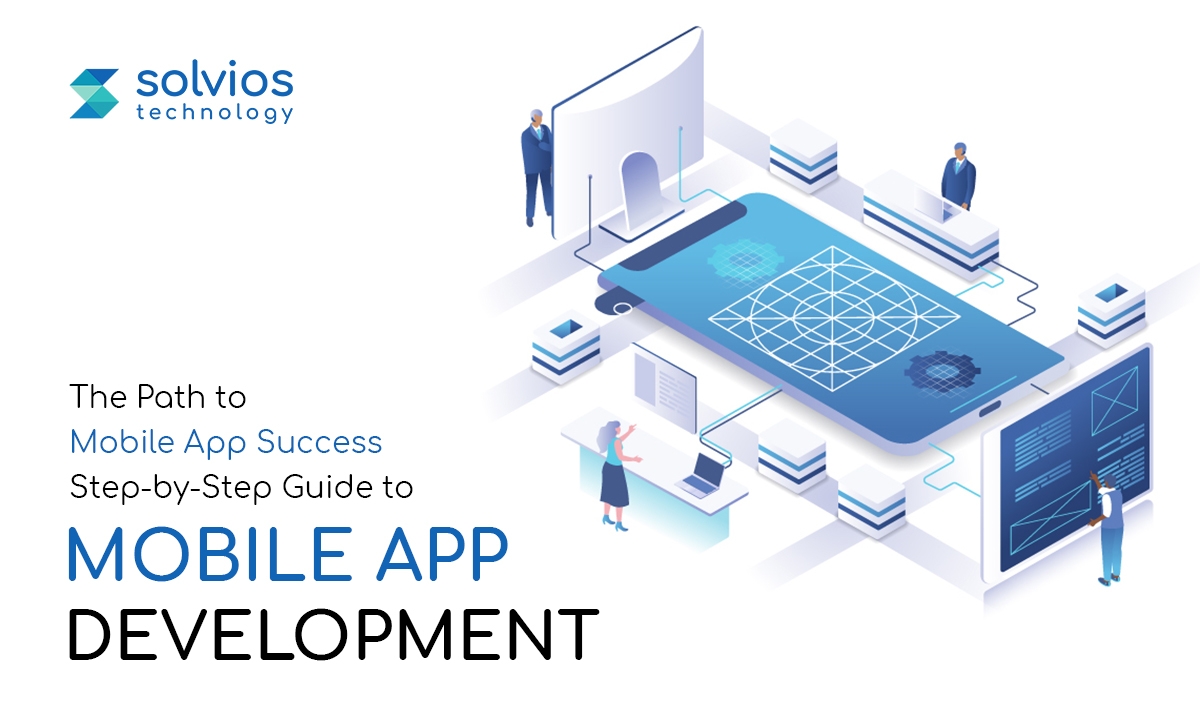
The mobile app development process includes the best strategy, impressive design, effective development, and successful deployment. As a beginner in the mobile app development process, you have to enhance your expertise in the main stages of mobile application development; different stakeholders get involved at each stage, the deliverables at different stages, and the complete details of the mobile app design.
7 Simple Steps to Follow for feature-rich mobile app development
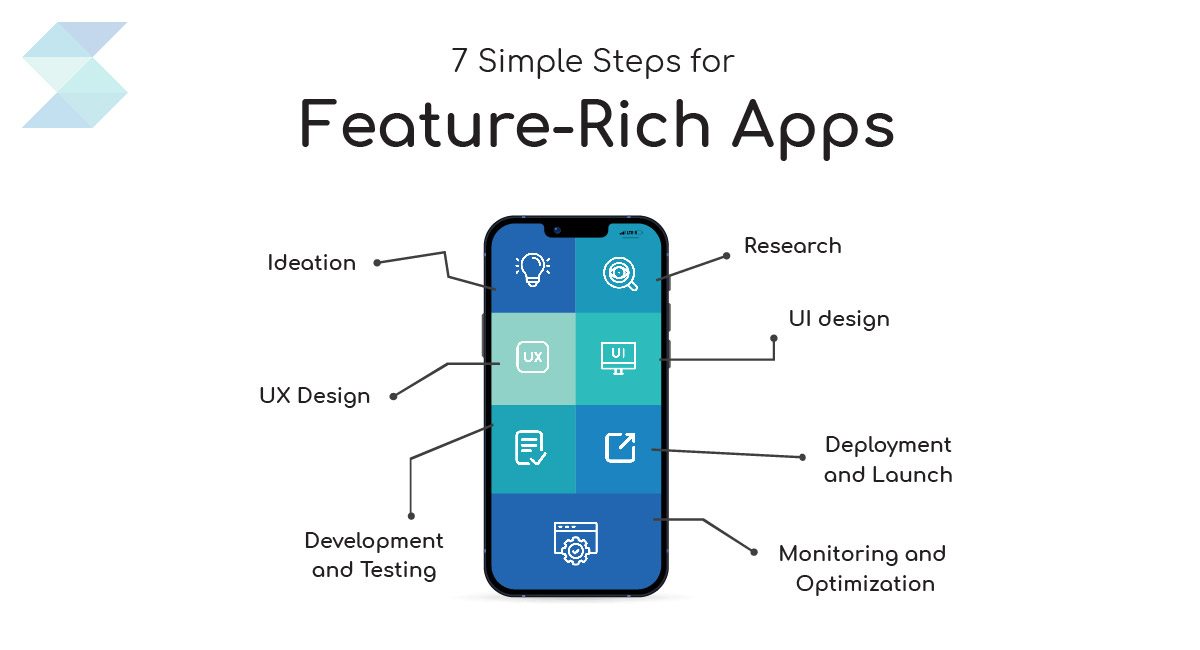
If you are looking for successful tips for the development of seamless and feature-rich mobile applications, you need to make sure of following the below listed 7 simple steps during the app development process.
Step 1. Ideation
Reliable mobile app development companies understand that every client has different expectations about the mobile application project. For example, some clients have well-documented requirements and others come to the professional with an idea to get a customized mobile app. Some business people wish to build a mobile app similar to an existing one.
As a mobile app developer, you must know the main goal from the start of the project. You can spend enough time to know and remember the main concept of your mobile app, target users, platform or platforms you build for, similar apps in the same niche, any marketing strategy, the business objective of this project, and other things.
There is a series of client interviews and workshops before the mobile app development process starts. This is to ensure the project goals, timeline, context, and other important things. If you discuss with the owner of the product, designers, marketing experts, domain specialists, and others involved in this process, then you can enhance your method to develop the mobile app as per the complete specifications of your clients.
Step 2. Research
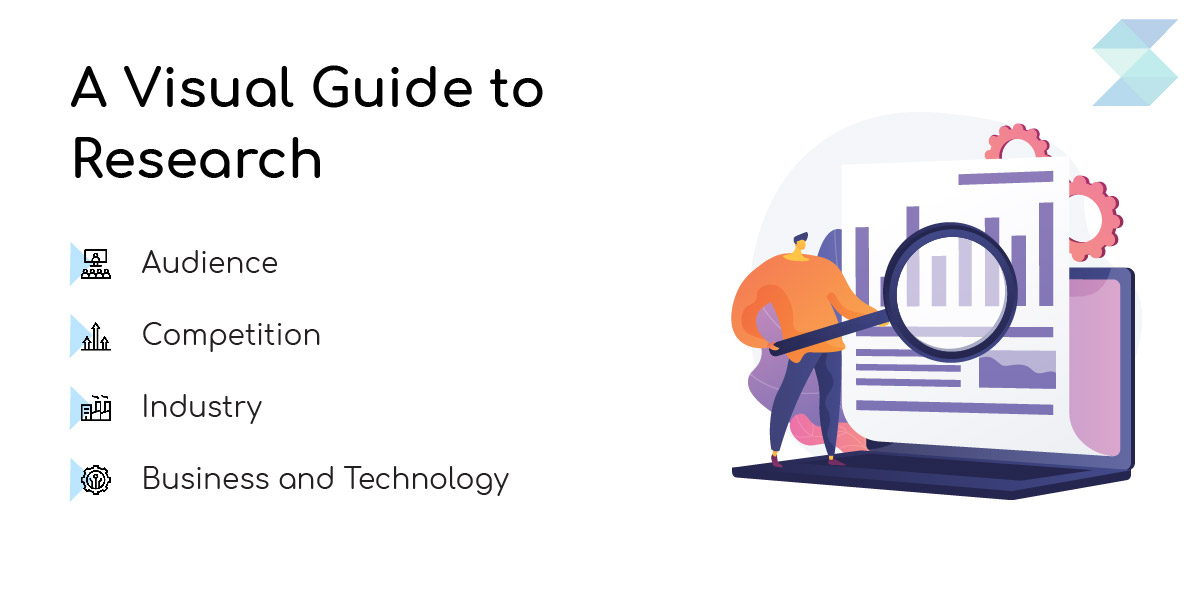
2.1 Audience
Mobile app developers must know about the future users of the application along with their expectations, habits, tech skills, challenges, goals, and device preferences. They have to gather these details and make user personals at the design stage.
2.2 Competition
Smart mobile app developers focus on what others offer in the competitive niche. They analyze the competition to find how other businesses solve similar challenges, what things they have, and what technologies they use. They are very conscious to know what they do well and things they have done better to understand the market and explore chances for a competitive advantage.
2.3 Industry
It is a suitable time to explore the monetization practices, technologies, rules, standards, and other things in the domain in which you design and develop the mobile app. You have to study the industry specifics and bring in the overall cross-industry expertise. This industry analysis process will have a good impact on the technology and design choices.
2.4 Business and technology
You can focus on the client’s business, operations, technology infrastructure, and other things associated with the future mobile app. This is because it is an easy way to choose an optimal tech stack and the complete mobile design experience to reflect the identity of the brand and get the desired consistency level with other services. You must prioritize the complete requirements, choose the technology scope, and make the best mobile app development solutions roadmap.
As a mobile application development enthusiast, you have to enable fast time-to-market. You can improve your efforts to plan the scope and implementation which lets you bring the app to the market and get feedback from users.
You can follow this method and get enough assistance to optimize the time and development cost.
If you have a clear vision of when and how the mobile app development solutions project will be implemented, you can successfully build the first market-ready version of the mobile app, what technologies will be used, what platform this mobile app will run on, and other important things.
Everyone who explores the basics of an extensive analytics and research project Discovery can get enough assistance to work out their ideas and focus on all options. They can successfully make a data-driven strategy for the project.
Emerging Technology Trends in 2023
Read MoreStep 3. UX Design
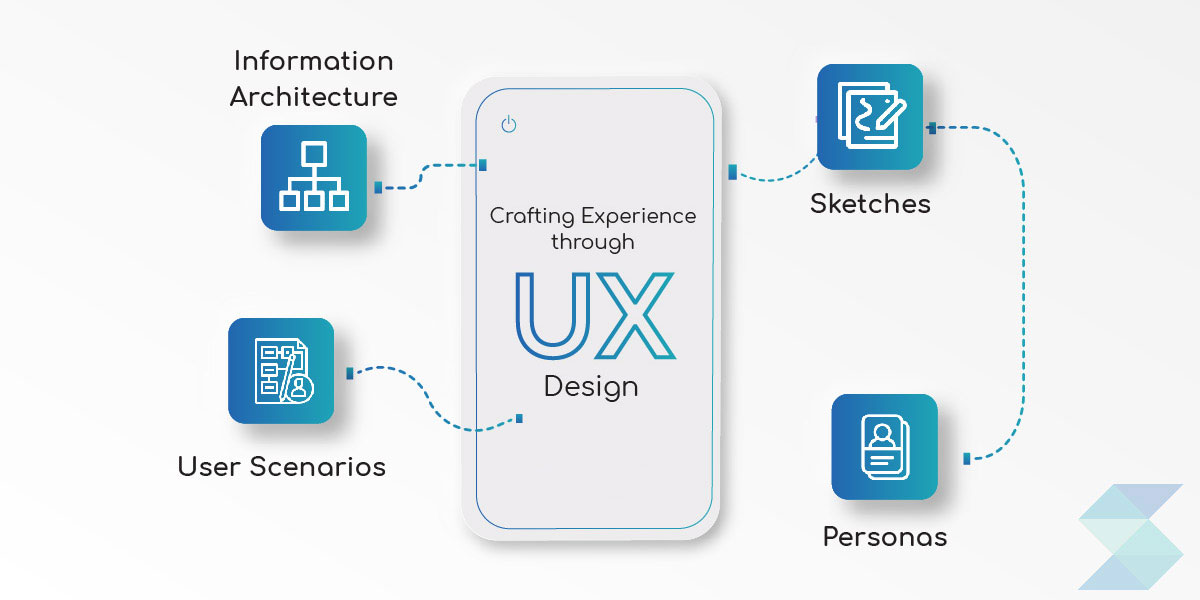
User Experience design is the most exciting part of the mobile app development lifecycle because it successfully gives the first appearance of the mobile application in terms of the look and work. You can find how users will experience the mobile app and interact with it. The user experience design is a multi-step process. You can focus on the following details and get an overview of this process.
3.1 Personas
Persona is all about a collective image describing a user group with similar intents, goals, tech skills, and behavior. You can use the persona to design experiences for addressing the requirements of target audiences/
3.2 User scenarios
Every user of the mobile app gets different experiences. User scenarios describe how every person experiences the app. Scenario maps are created by placing different scenarios together. They illustrate how every persona uses the application.
3.3 Information Architecture
Information architecture reveals the overall structure and preliminary layout of the interface of the mobile app. It is designed to give an overview of what will be on every screen, how these things are connected, and how every user navigates all through the mobile application.
3.4 Sketches
Experienced and dedicated mobile app developers properly use paper and whiteboard sketching. This is because of a collaborative and creative method of custom mobile app development. The main purpose of this process is to explore each design version for every screen and interaction. Every member of the teams like the design, project management, business analysis, and quality assurance can participate and contribute. This busy process with dozens of iterations and several suggestions enhances the mobile app development process further.
Step 4. UI design
The user interface design step involves turning black-and-white wireframes into very colorful and engaging mock-ups. You can use this satisfying stage of mobile app development. You have to get an overview of how exactly your mobile application will look when every user opens it on their mobile devices.
The first step of the user interface design process begins with mood boards, color scheme samples, and a collection of design elements when your mobile app represents a new brand developed from scratch.
The main purpose of a user interface designer is to translate the brand’s unique identity to the new application when you have a style guide, brand book, and other types of successful branding materials. You will get a very colorful high-fidelity prototype of your mobile application in any design tool as expected.
The last stage in the mobile app design phase is the user interface design. You have to remember the iterative development method because you must test the assumptions and design ideas to make necessary corrections as per the early feedback before the system gets to the end users’ hands.
Step 5. Development and Testing
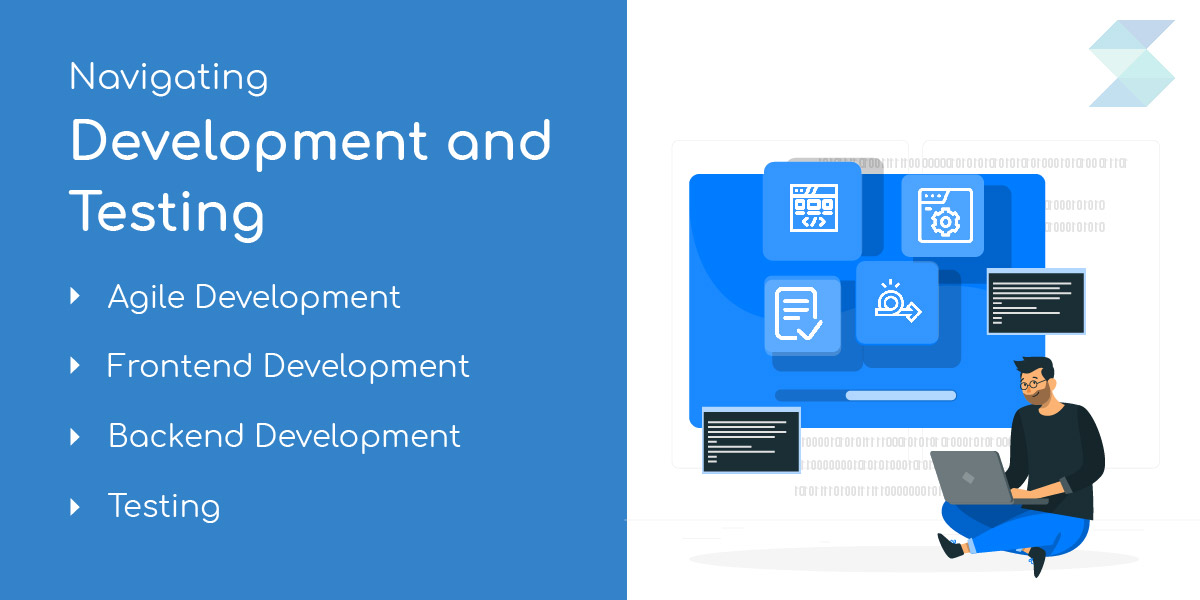
The mobile app development team handles the completed and approved user interface design. This transition must run smoothly through prompt and proper communication among mobile app designers and developers.
The mobile app developers communicate and clarify their doubts before the coding process begins. They are dedicated to building a functional application and making it pixel-perfect and very engaging.
The overall skill set and composition of the mobile app development team are based on the specifics of the mobile application. You can use one Android and one iOS mobile app design when you build two native mobile apps. However, you require engaging with two engineers for the iOS and Android app development for the Apple and Google Play Store.
Cross-platform mobile applications are successfully built with the latest frameworks. You may have to add additional competence and skills when your mobile application requires very complex backend development.
The development phase is one of the longest phases of mobile app development. However, it is one of the most rewarding parts of the entire project. This is because everyone can try the mobile application after it is properly developed.
5.1 Agile development
The agile development method is a time-proven and industry-standard method in software development. The complete process of software development is divided into a series of cycles before starting coding. Every series of cycles includes development, testing, and reviews. You have to develop a batch of features, test the implementation, fix problematic issues, and make a review.
You must quickly realign the custom mobile app development plan devoid of causing any serious and costly change and delay when you notice that something does not work well and requirements from clients change. This successful method provides transparency for the overall mobile app development team. You can focus on how the application evolves, step in with comments, and iteration by iteration to develop the mobile app development process.
5.2 Frontend Development
Building a client application that will be installed on the mobile phones of users is all about the front end of the application development process. This phase of the mobile app development brings the user interface design to life and makes it work well as expected.
Mobile app developers run the code on the mobile device using the limited battery life and memory capacity to make informed decisions that will influence the mobile app’s overall performance.
You have to figure out how much processing must be done on the mobile device to get a near-instant response to every command from end users. You have to also decide on the data management and logic issues that will run on the server to enhance the application and provide very good scalability.
5.3 Backend development
The mobile backend development includes server-side engineering. In the first mobile app development stage, the groundwork for this backend architecture is laid down. You have to integrate or build the resources to manage the content of the mobile app, store, and pull user data from the databases, and work with other software and third-party systems based on the functional requirements and tech specifications of the mobile app development project.
Nowadays, mobile app developers engage third-party cloud services for successfully hosting and maintaining the entire infrastructure of the mobile app. The backend development team has to make certain strong data security, especially secure authentication methods, user data safety, and encryption technologies.
5.4 Testing
Mobile app developers have to test the implemented mobile app in the testing phase for quality assurance which is vital in every development cycle. You can explore the performance and fundamental tests to ensure how to keep everything working as it should. The usability test is conducted to focus on user experience. You can conduct the test process on different device simulators and devices.
Step 6. Deployment and launch
If you ensure that your mobile application is well-performing and sound, then you can enter the final step which is deployment and launch. You can conduct tests and reviews with potential users and stakeholders to get feedback. Once you have ensured the mobile app’s performance, you can add it to the store or stores. You require a developer account to do it.
Step 7. Monitoring and optimization
You can monitor the performance of the mobile app after launch. You must go through the user reviews and discuss with the end users to find any issue with the usability of the app. You can define certain keyword performance indicators and engage the best analytics tools for effective monitoring. You can use the feedback and define the strategy for the optimization of the mobile app further.
How long does it take to develop an app?
The mobile app development process time takes from two to three months when the mobile app is lightweight and simple by nature.
For example, market-ready minimum viable product projects belong to this category.
The time taken for the development of feature-rich mobile applications properly integrated with different third-party services is between 6 months to one year. The time needed for mobile app development is mainly based on the technology stack and approach, functionality, and integrations.
It’s Your Call!
Mobile apps development companies with successful records nowadays properly use modern resources and enhance their expertise in this profession further. You can follow this simple method for mobile app design and development. You will get remarkable benefits from efficiently using the tools and technologies in every stage of the custom mobile app development project.
Looking for Custom Mobile App Development Services?
Let’s Connect!Tags
Related Blog
Want to get started with App Development?
These applications are acquiring enormous prevalence by offering hands-on enterprise mobility solutions for organizations around the globe.
Start A ConversationLatest Blogs
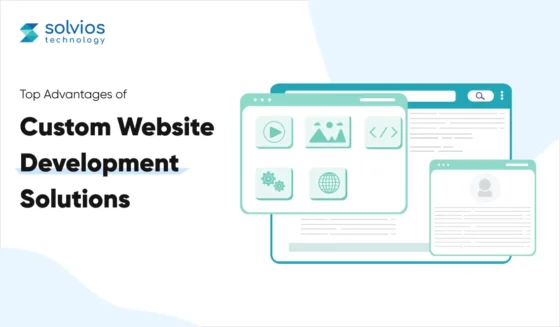
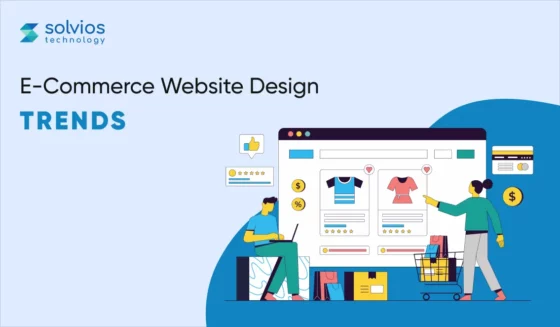
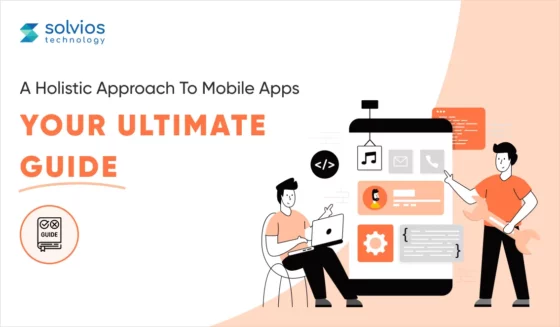

Custom Website Development Solutions: A Way to Achieve Long-term Success
Read More














